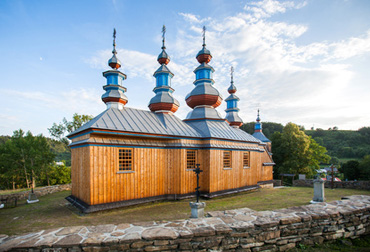What to do except fishing
KRAKÓW
Sights and nightlife

The city of Pope John Paul II, the former Polish capital and one of the most beautiful cities in Europe. It has an extensive Old Town, valuable monuments of Gothic and Renaissance architecture, one of the oldest universities in Europe, and a well-restored Jewish Quarter. Nightlife in numerous clubs.
BIESZCZADY
Mountains and nature

One of the most interesting mountain ranges in Poland. It is characterized by a landscape with typical poloniny and beech forests. Many rare species of animals live in them, including lynx, wolf and Europe's largest snake Aesculapius. The mountains are still relatively wild and little besieged by tourists.
CUISINE
Polish foods

One of the most highly regarded in Europe. The most common include venison, bigos (cabbage stew), roast meats, smoked fish, fine cheeses, herring snacks, steak tartare and dumplings stuffed with cheese, potatoes, cabbage, mushrooms or meat, and delicious cakes.
WIELICZKA
Salt Mine

Mining of rock salt began in the area in the late twelfth and early thirteenth centuries. Currently the mine in Wieliczka has 9 levels, the lowest of which is 327 meters below earth surface. The total length of galleries is more than 300 kilometers. The mine has been listed as a UNESCO World Heritage Site. Annually, it is visited by over a million tourists. In a poll organized in 2007, it was recognized as one of the seven wonders of Poland.
Auschwitz
Extermination camp

Former Nazi German concentration camp (this is the official UNESCO nomenclature) is one of the most shocking museums in the world – a testimony of the extermination of Jews and the martyrdom of representatives of many other nations during World War II. The camp, built by the Nazis in occupied Polish territories, operated in 1940-45, and approximately 1.3 million people lost their lives in it. A must for any tourist interested in the history of the twentieth century.
Churches
Wooden Architecture Route

Another big attraction of the south-eastern Poland, listed as a UNESCO World Heritage Site, is the old wooden Christian Orthodox churches. There are sixteen of them altogether, of which eight are located on Polish territory, and eight in Ukraine. The churches are timbered buildings, crowned by distinctive domes. They arose in the period from the sixteenth to the nineteenth centuries as temples for the faithful of the Christian Orthodox denominations. Inside the church you will find valuable murals and iconostases.
